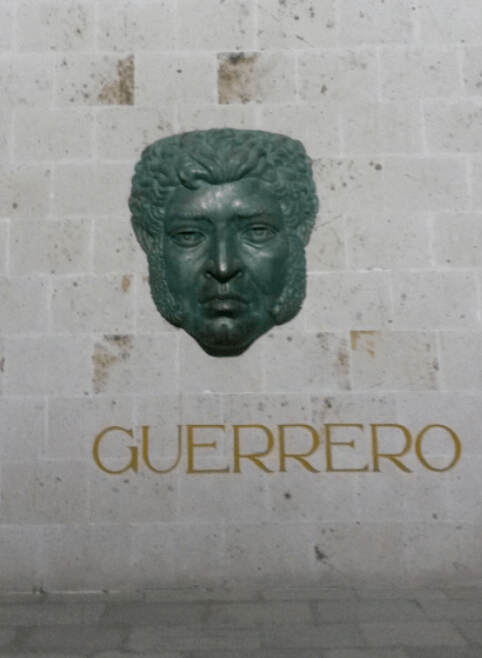
Afro-Mexican Revolutionary Leader Vicente Ramon Guerrero Saldaña fought the Spanish for Mexican Independence, help write the Mexican Constitution, and Abolished Slavery in Mexico (b.1782-d.1831)
Mexico’s independence from Spain is partially a result of the work of Afro-Mexican revolutionary leader Vicente Ramon Guerrero Saldaña. He was born on August 9, 1783, in Tixtla–now known as the Mexican state of Guerrero, which was named after him–to Juan Pedro Guerrero, who was Afro-Mexican, and Guadalupe Saldaña, who was Indigenous, or native Mexican. He spent his youth working as an “arriero,” a mule driver transporting goods for his father’s business.
During these travels, Guerrero learned about the fight for Mexican independence from Spain and became a supporter of the cause. When he refused to give a Spaniard his sword as a show of good will, he famously said “La patria es primero,” (My homeland is first). It has now become the motto of the state of Guerrero in his honor and is his most famous saying. His roots in the movement began when he enlisted in José María Morelos’s insurgent army of the southwest in December 1810. In 1815, Morelos was captured and executed by the Spanish, and Guerrero continued to lead his guerrilla forces against the Spanish until 1821, when Mexicans finally gained independence from Spain.
But his push for progress didn’t end there, when he became president, the second president of Mexico, in 1829, he helped write the Constitution of Mexico, and formally abolished slavery in Mexico (over 30 years before it was abolished in the US). The slave trade had already been banned by the Spanish authorities in 1818, a ban that had been reconfirmed by the emerging Mexican government in 1824. A few Mexican states had also already abolished the practice of slavery, but it was not until September 16, 1829, that total abolition across the nation was proclaimed by the Guerrero administration. Slavery at this point barely existed throughout Mexico, and only the state of Coahuila y Tejas was significantly affected, due to the immigration of slaveowners from the United States. Guerrero called for public schools, land title reforms, industry and trade development, and other programs of a liberal nature. As president, Guerrero championed the causes of the racially oppressed and economically oppressed.
On December 4, 1829, Guerrero was forcibly removed from the presidency in a rebellion under his conservative Vice-President, Anastasio Bustamante. Guerrero left the capital to fight in the south and returned to the region of southern Mexico where he had fought during the war of independence.
Guerrero was finally captured and executed in 1831. He was betrayed in Acapulco, an important Pacific sea port for goods and trade, by a fellow insurgent. One historian has called it, “the most shocking single event in the history of the first republic: the capture of Guerrero in Acapulco through an act of betrayal and his execution a month later.” In January 1831, the betrayer lured Guerrero onto his ship in the Acapulco port under the guise of having a friendly meal, where he was captured, and taken to the Mexican authorities, who summarily executed him a month later, on February 14, 1831. He was sold out for 50 thousand pesos, a fortune at that time.
In 2011, a research investigation about Vicente Guerrero’s African ethnicity won an award from the Scientific Committee on the Slave Route Project of UNESCO (United Nations Educational, Scientific and Cultural Organization). This research has shown that his African roots were whitewashed in portraits which reflected racism from that time. Until recently, Mexicans did not know that the second president of their country was half African half Mexican. Guerrero is now recognized for his contributions to the revolution as well as Mexico’s first Black Indigenous president. His hometown of Guerrero is now home to one of several Afro-Mexican communities and in 2020, “Black” became one of the official ethnicity options on Mexico’s census form. This recognition is major for the Black community as leaders like Guerrero are recognized for their work in Mexico’s history.
https://en.wikipedia.org/wiki/Vicente_Guerrero
